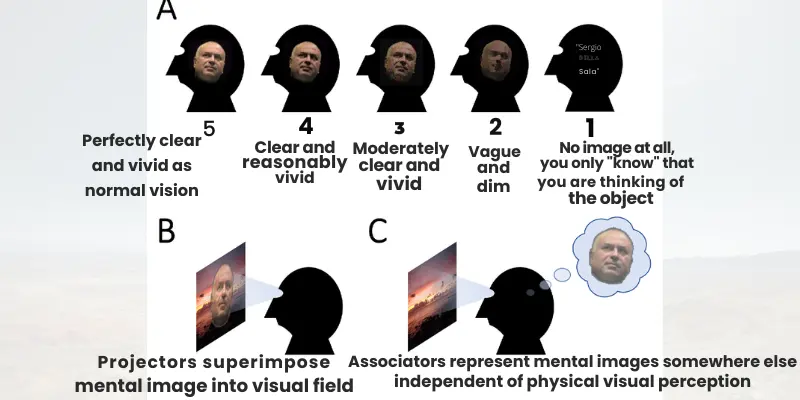What is Visualization? A Simple Guide to Mental Success
Published: 17 Aug 2025
Have you ever imagined yourself giving a great speech or winning a big game? That’s visualization in action! Visualization means picturing success in your mind before it happens. Studies show that athletes, business leaders, and students use this technique to stay focused and improve performance. Your brain reacts to imagined experiences almost like real ones; this is why visualization is so powerful.
I have spent years learning and using this technique to achieve goals. In this article, I will break down what visualization is, how it works, and why it helps. Whether studying for exams or building your career, this guide will show you how to use it to succeed.
By reading this, you’ll learn how visualization can turn your dreams into reality. Think of your brain as a GPS (Global Positioning System); when you set a clear mental destination, it helps guide your actions. Let’s explore how you can use this simple but powerful technique!
Understanding: What Is Visualization?
Visualization is a simple but powerful technique to train your mind for success. Athletes, professionals, and students use it to stay focused, boost confidence, and perform better. When you imagine yourself achieving something, your brain starts preparing to make it real.
Definition of Visualization
Visualization means mentally seeing success before it happens. It’s like a practice session in your mind, where you picture, feel, and experience your goal in advance. This helps you feel more confident and ready when facing real challenges.
Visualization is daydreaming with a purpose.Les Brown
How It Works: The Science Behind It
Visualization is powerful because your brain responds to imagined experiences in the same way it does to real ones. Studies show that when you visualize, your brain activates the same neural pathways as when you act. This mental rehearsal helps improve focus, reduce fear, and boost confidence.
Simply put, your brain practices success before it happens, making it more likely to come true.
Practical Example
Consider athletes preparing for a major game. A sprinter, for example, closes their eyes and imagines themselves running the race, feeling the track under their feet, and crossing the finish line first. This mental practice strengthens their performance because their brain already believes they have succeeded. The same applies to students before exams or professionals before a big presentation—visualizing success prepares the mind to perform at its best.
Types of Visualization
Let’s take a look at the various types:
1. Creative Visualization
Creative visualization is imagining your dreams and goals as if they’ve already come true. It’s like picturing yourself graduating or landing your dream job.
- When you picture these goals clearly, you create a mental roadmap that makes achieving them feel real. By imagining your success, you set yourself up for it to happen.
- I’ve used this technique before big presentations, which has helped me stay calm and confident when I step in front of an audience.
2. Guided Visualization
Guided visualization is a technique that uses a script or audio to help you envision a specific goal or a peaceful scene. It’s a helpful way to focus, especially for beginners.
- You might listen to a meditation app that guides you to imagine a tranquil beach or a quiet forest. This technique helps you relax and mentally prepare for challenges.
- I remember using guided meditation before an important exam. It calmed my nerves, helped me focus on the task ahead, and worked wonders.
The mind is everything. What you think, you become.Buddha
3. Process Visualization
It means breaking down your goal into smaller, manageable steps. Instead of just imagining the result, you visualize each step that gets you closer to it.
- For example, before giving a presentation, you can visualize yourself walking onto the stage, starting confidently, and answering questions easily. This helps you feel ready and confident for each part of the process.
- I visualized every step when preparing for a big project, like organizing my thoughts, presenting, and celebrating afterwards. It made the entire process feel achievable and less overwhelming.

Benefits of Visualization
Visualization isn’t just about dreaming; it’s a tool that offers real, practical benefits. Let’s break down how it can help you.
1. Boosts Confidence: Helps You Believe in Yourself
Visualization can give you the confidence boost you need. When you imagine yourself succeeding, your brain starts to believe it’s possible.
It’s like practicing success in your mind so you’re ready to act confidently when the time comes. By seeing yourself excel, you build trust in your abilities.
Personal Experience: I’ve used it before important meetings, and it always helps me feel confident and prepared.
2. Improves Focus: Keeps You on Track with Your Goals
- When you visualize, you get a clear mental picture of your goals. This makes staying focused and working toward your goals easier.
- Envisioning helps you focus on the steps needed to achieve your goal, whether aiming for a promotion or mastering a new skill.
- I often use visualization to focus on my next steps, which keeps me on track and prevents distractions from getting in my way.

3. Reduces Stress
Visualization helps calm anxiety by focusing your mind on positive outcomes. Instead of worrying about what might go wrong, you imagine what could go right. This helps reduce stress and fosters a sense of control over your future.
Before stressful events like exams or presentations, I always take a few moments to visualize positive outcomes. This simple technique has been a game-changer in helping me manage my nerves.
Visualize for Success
Before a big test, a student might feel nervous. Instead of worrying, they close their eyes and imagine studying well. They picture themselves answering questions with confidence and doing great. This simple trick helps them feel calm and focused. When they believe they can do well, they feel ready and do better on the test.
How to Practice Visualization (Step-by-Step Guide)
- Step 1. Find a quiet space: Pick a calm, peaceful place to focus without distractions.
- Step 2. Close your eyes and relax. Take a few deep breaths to help calm your body and mind.
- Step 3. In detail, imagine your goal or dream (use all your senses). Picture your goal vividly; see, feel, and visualize every detail.
- Step 4. Focus on the positive feelings associated with achieving your goal. Fantasize the joy and pride you’ll feel when you reach it.
- Step 5. Repeat regularly: Practice this daily, even for a few minutes.
- Start with small goals and gradually move to bigger ones.
- Begin with simple goals and build up to bigger dreams as you get more comfortable.
| Interesting Facts |
|---|
|
I once used visualization before a job interview. I pictured myself confidently answering questions, shaking hands, and leaving the room proud. When the interview came, everything unfolded just as I had fantasized. That moment made me truly believe in the power of visualization. It’s a simple habit, but it really works when you make it a regular practice.
Common Mistakes to Avoid
Understanding these common pitfalls can enhance your mental imagery practice and help you achieve better results.
| 1. Not Being Specific |
|---|
Simply thinking about success isn’t enough. You need to visualize the details, where you are, what you’re doing, and how it feels.
|
| 2. Giving Up Too Soon |
|---|
|
| 3. Focusing on Negative Outcomes |
|---|
|
Conclusion
What is visualization? It isn’t just a mental exercise; it’s a proven way to boost confidence and achieve goals. Spending just 5 minutes a day visualizing your success can help you feel more prepared and motivated. The more specific you are, the better results you’ll see.
If you’re new to this, start by visualizing simple wins. When I first tried it, I imagined waking up early and completing my morning workout. It worked! Small victories build momentum, so begin with what feels achievable.
Your mind is a powerful tool; what you vividly imagine, you can create in reality. Start visualizing your success today, and watch how your thoughts shape your future.
| Bonus Tips for Effective Visualization |
|---|
|
FAQs
Here are some common questions and answers:
No, visualization is more focused and purposeful than daydreaming. Daydreaming is often random, while visualization involves imagining your goals and the steps to achieve them. It’s about creating a clear mental picture of success.
The results depend on your consistency and the complexity of your goals. Many people notice small changes within a few weeks of regular practice. The more you visualize, the more effective it becomes.
Yes, visualization can help calm your mind by allowing you to imagine positive outcomes. It will enable you to focus on success rather than stress. Regular mental imagery helps reduce anxiety by promoting a sense of control.
Start by visualizing for just 5 minutes a day. Over time, you can gradually increase the time. Consistency is key, so make it a daily habit for better results.
No, anyone can use visualization! Whether you’re a student, a professional, or someone working toward personal goals, it is a tool that helps anyone looking to improve. It’s all about focusing your mind on success.
Start by visualizing small wins, like completing a task or feeling confident during an event. As you gain confidence, you can begin visualizing larger, long-term goals. This will help you build momentum toward bigger achievements.
Visualization can’t replace action but can help prepare your mind for success. It strengthens your belief in your abilities, which makes it easier to take focused, effective action. Combine visualization with hard work for the best results.
Yes, the more detailed your visualization, the better. Imagine your goal as vividly as possible—use all your senses, like sight, sound, and feeling. This makes your envisioning more powerful and real in your mind.
If this helped you even 1%, smile – it means everything.
(No email needed. No follow required. Just smile.)

- Be Respectful
- Stay Relevant
- Stay Positive
- True Feedback
- Encourage Discussion
- Avoid Spamming
- No Fake News
- Don't Copy-Paste
- No Personal Attacks

- Be Respectful
- Stay Relevant
- Stay Positive
- True Feedback
- Encourage Discussion
- Avoid Spamming
- No Fake News
- Don't Copy-Paste
- No Personal Attacks







